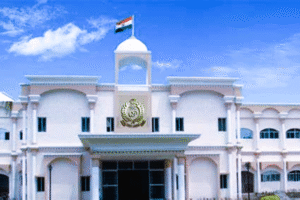
Odisha plans to cultivate Kharif crops on 58.5 Lakh hectares in 2025
Bhubaneswar, May 29 (UNI) The Odisha Government has unveiled its Kharif strategy for 2025, aiming to cultivate crops on approximately 58.5 lakh hectares of land.
The crop-wise area allocation includesPaddy: 35.95 lakh hectares,Pulses: 6.10 lakh hectares, Oilseeds: 2.25 lakh hectares,Millets: 2.60 lakh hectares,Maize: 2.70 lakh hectares,Cotton and other fibre crops: 2.54 lakh hectares,Spices: 1.15 lakh hectares and Vegetables and other crops: 5 lakh hectares
In Odisha, Kharif season crops primarily comprise paddy, maize, pulses, oilseeds, millets (mandia), and cotton.
However, Paddy remains the principal food crop, and the strategy emphasizes seed distribution, material management, mechanization, and disease and pest control measures for its cultivation.
According to official sources, regular updates and assistance are being provided to farmers through the Samrudh Kisan Helpline.
The India Meteorological Department (IMD) has predicted normal rainfall for the upcoming season, which is expected to benefit farmers significantly.
For Kharif 2025, irrigation will cover approximately 37.66 lakh hectares, utilizing major and medium irrigation projects, as well as minor lift, small lift, and large lift irrigation systems.
To support cultivation, around 4 lakh quintals of high-quality certified seeds have been made available through the Odisha State Seed Corporation and private suppliers.
Additionally, the state government has created a corpus fund of Rs.100 crore to ensure continued supply of premium seeds.
Around 9.55 lakh metric tonnes of fertilizers—including urea, DAP, MOP, and NPKS—will also be distributed as per requirement.
Efforts are underway to restore and conserve forgotten food grains and neglected crops. Key initiatives include documentation, conservation, post-paddy field management, mechanization,
field demonstrations, and crop protection programs.
Under the Odisha Balabhadra Organic Farming initiative, organic farming is being promoted on 3,450 hectares under the Amrit Anna Project, aimed at supplying organic produce for “Koth Bhog” and “Maha Prasad” offerings to Lord Jagannath at the Shri Jagannath Temple over the next five years.
To enhance post-harvest management, the state has established 58 cold storages and is providing financial assistance and subsidies to promote additional cold storage infrastructure.
Idle cold storages are also being revived.
In the financial year 2024–25, approximately 1,152 agro-industrial units will receive financial support totaling Rs.160 crore.
Furthermore, the government is offering incentives for potato cultivation, palm oil production, the” Panas Mission, Spice Mission, and vegetable farming”.
Farmers have been advised to utilize various schemes and services, including soil health management, input assistance of Rs.3,100 per quintal under the Samriddh Kisan Yojana, and access to digital services such as Agri Stack, Kisan Registry,Pradhan Mantri Fasal Bima Yojana.
















